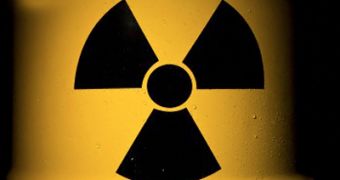This past Sunday, Tokyo Electric Power Co. (TEPCO) announced that, according to recent measurements, radiation levels recorded at the bottom of one of the facility's storage tanks were 18 times higher than previously thought.
More precisely, the company said that radiation levels around this storage tank had, for some still unknown reason, spiked to an impressive 1,800 millisieverts per hour.
About a week ago, the radiation recorded in this area was at a level of just 100 millisieverts per hour, USA Today tells us.
In the aftermath of this radiation spike, TEPCO promised to do everything in its power to find why radiation levels had gone through the roof.
What's more, it said that it would do its best to make sure the nuclear plant's workers were kept out of harm's way.
“We will investigate the cause of this issue, taking any appropriate countermeasures immediately, and continue to make every effort to secure the safety of workers.” a statement issued by the company on September 1 reads.
Furthermore, “We deeply apologize for the great anxiety and inconvenience caused by the recent contaminated water issues at the Fukushima Daiichi NPS, which affect residents near the power station and the broader society.”
Many have argued that the levels of radiation recently recorded near the Fukushima nuclear plant's storage tank are more than enough to kill a person after just 4 hours of exposure.
Besides, one minute of exposure would be the equivalent of the annual radiation exposure limit for workers.
TEPCO explains that, although technically true, such statements are an overdramatization of what is presently going on at the nuclear facility.
“Some articles reported that ‘if a person were exposed to this amount of radiation for four hours continuously, it would lead to death,’ by comparing with the radiation level that would result in death (7,000 mSv), or ‘it would take only one minute to reach the annual radiation exposure limit for workers,’ by comparing with the annual radiation exposure limit for workers (50 mSv).”
“However, we believe that simply comparing the 1,800 mSv/h figure with these standard levels is inappropriate, since the standard levels represent the cumulative effective dose (not equivalent dose) upon the whole body,” the company says.
Despite this radiation spike, the tank does not appear to be leaking. Thus, water levels inside it are said to have remained the same.

 14 DAY TRIAL //
14 DAY TRIAL //